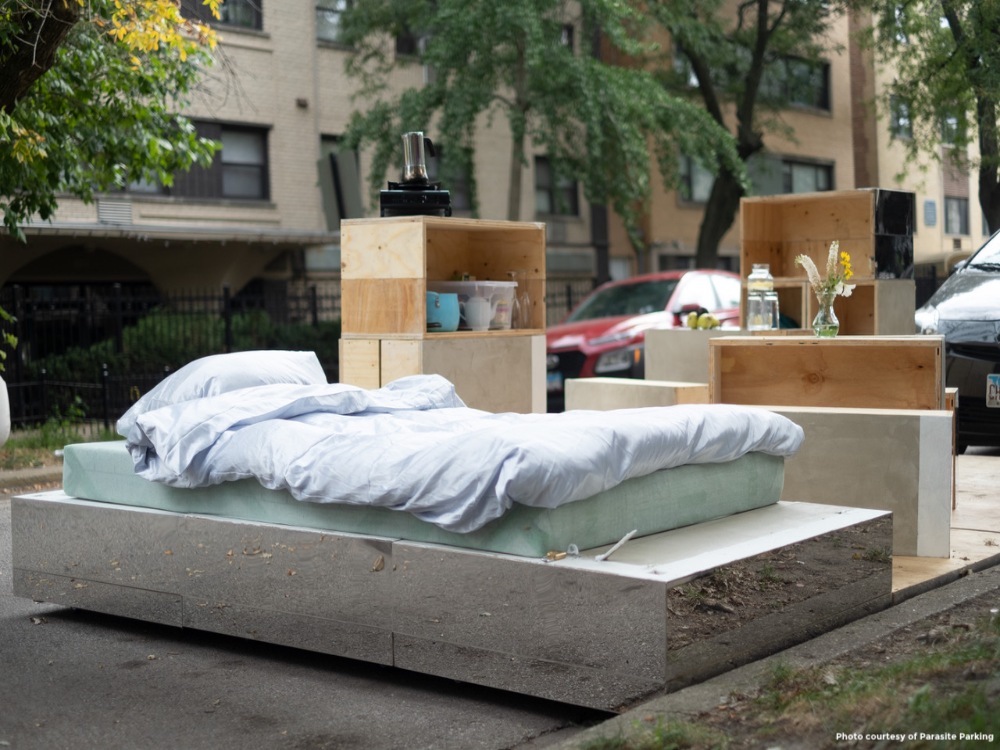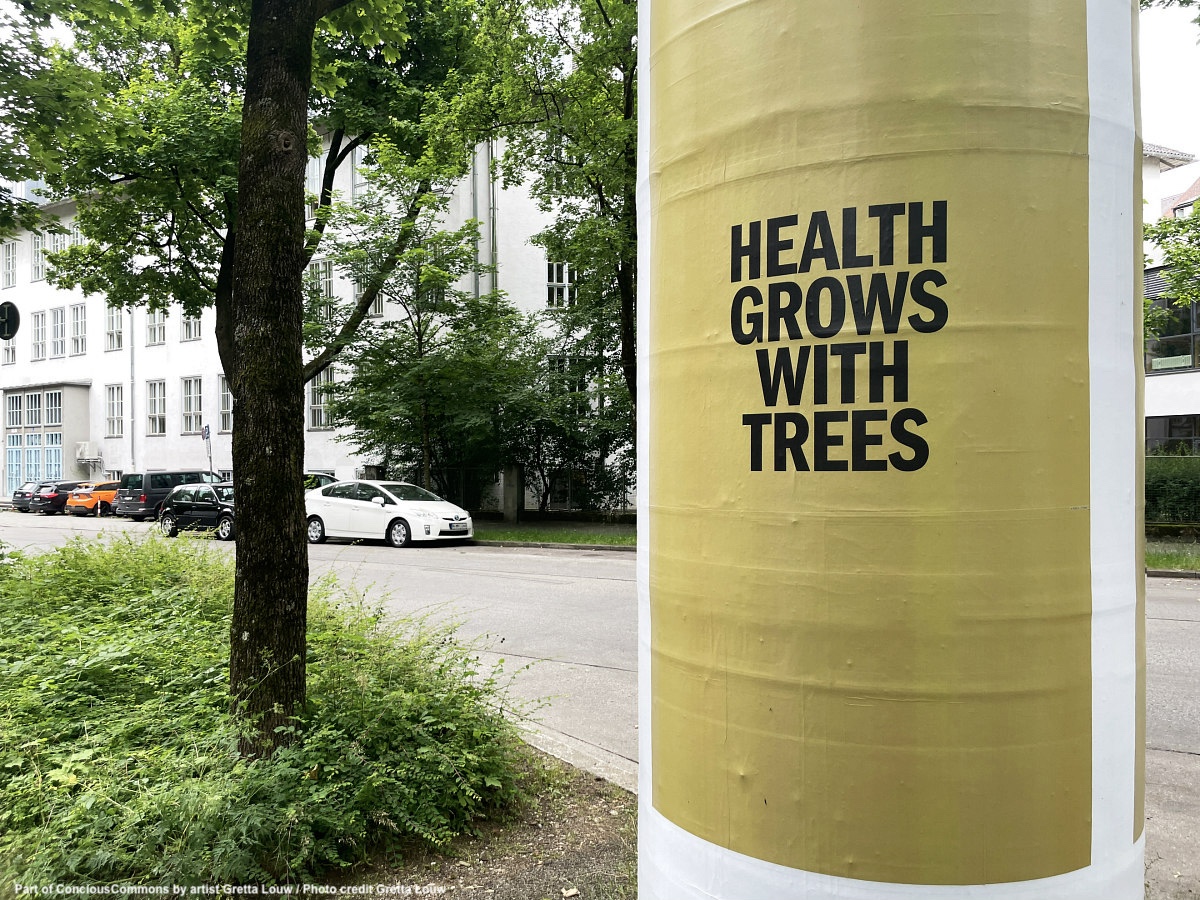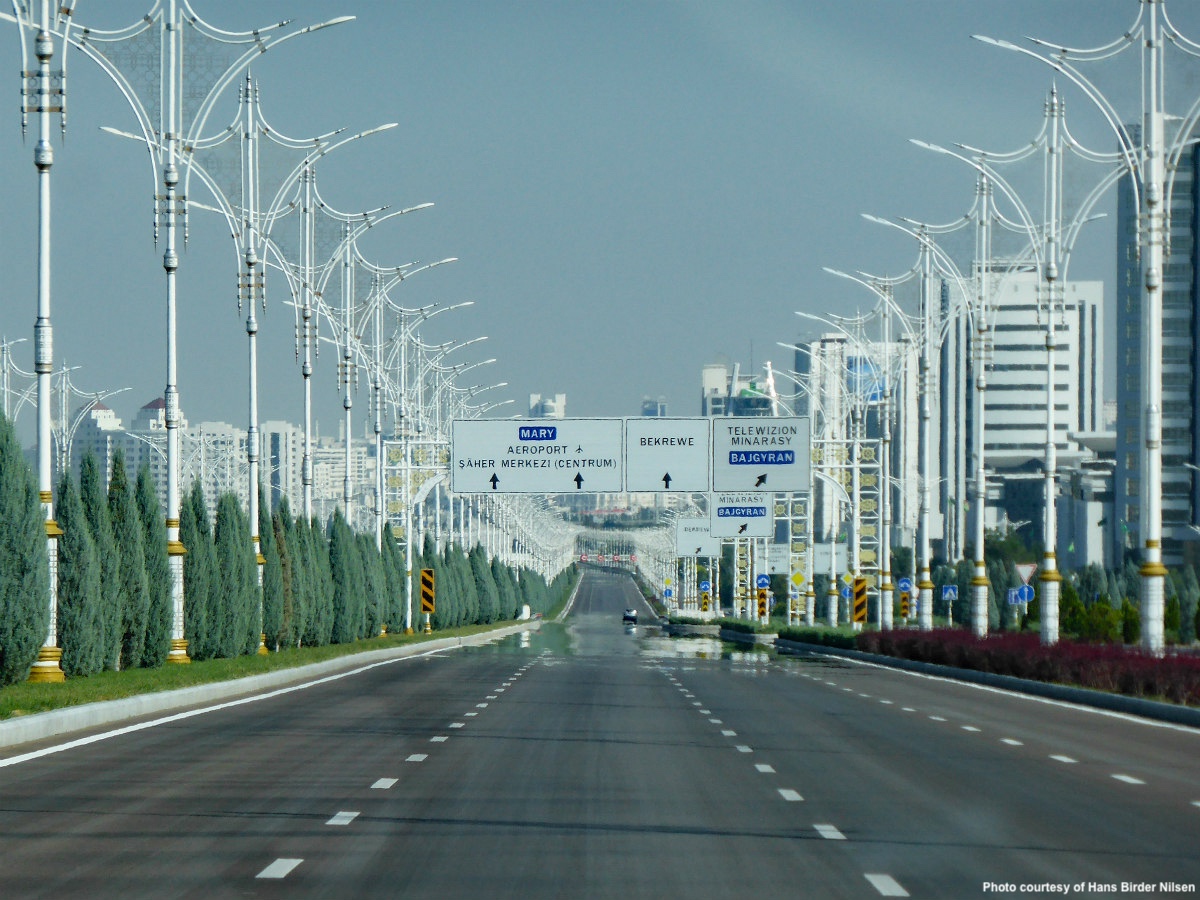The frigid breezes that blow off Lake Michigan and sweep through the city’s streets didn’t stop Berlin based artists Jakob Wirth and Alexander Sacharow from sleeping out in the open. They occupied parking spaces across several neighbourhoods of Chicago and they lived in them 24 hours a day for 7 days. Their urban intervention called Parasite Parking imposed itself on the streets of the city as an uninvited guest, questioned the privatization of parking spaces and invited locals to join in on the imposition with collaborative talks and parasitic performances at the space.
Meanwhile the Chicago Architecture Biennial had already begun, under the motto The Available City. This year a new model is experimenting with site-specific installations grounded in vacant spaces of the city’s underserved neighbourhoods and explores how they could be transformed. These vacant spaces are, just like every other available space in the city, increasingly subject to gentrification and rent-seeking. But nothing shows this more than the countless parking spaces clogging up urban space.
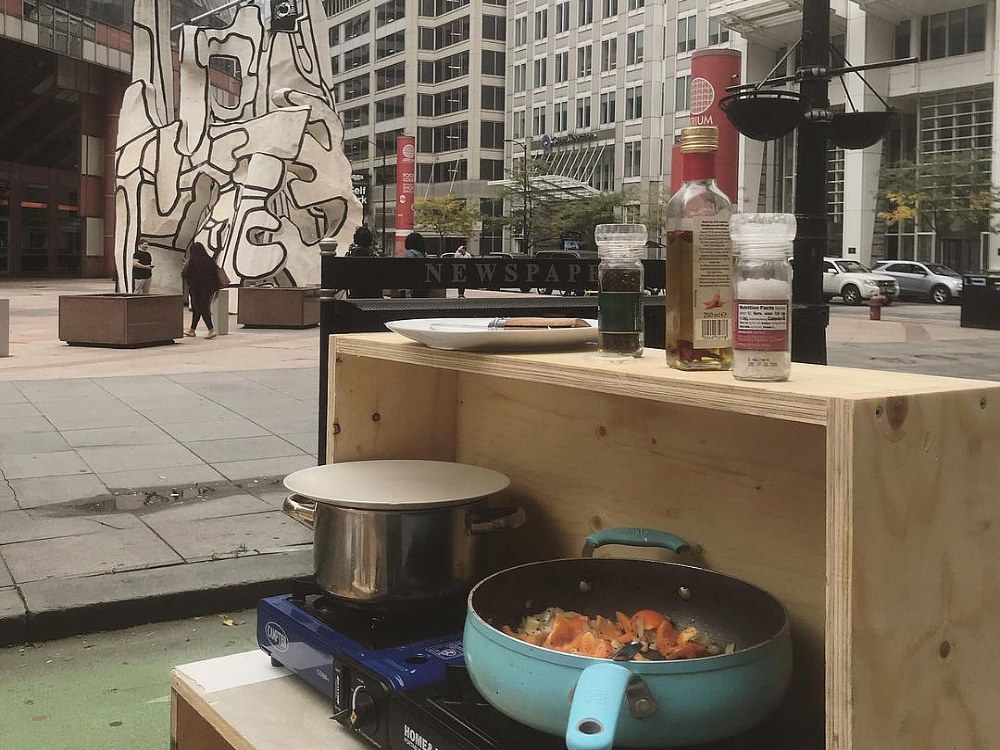
What intrigues Wirth and Sacharow most, is their possible variety of uses and the controversy of the privatization of parking spaces. Parkings are the border between private and public, between staying and leaving, between the mobility of yesterday and the more climate-friendly alternatives of tomorrow. Between 50% and 60% of space in cities is used for cars, around 20-30% for their parking. However, much more is possible in this space. We could also work, sleep, cook, make music, experience community – or simply be. This is exactly what the Parasite Parking does. And by doing so, it raised the questions: who owns public space, who decides over it, and most importantly, who has access to it in the first place?
How can we reclaim urban space for public use?
Wirth and Sacharow see parking spaces as niches in a city for emancipatory practices. Parasite Parking occupies these niches and explores their subversive potential. In their studio in Berlin, they built a multifunctional platform camouflaged as a parking space, which they shipped to Chicago. This platform uses a concrete-paved surface and mirrored sides to adapt to its paved environment. In addition it can easily transform to create space for various uses: as a living space, a stage, a café or simply into a conventional parking space.
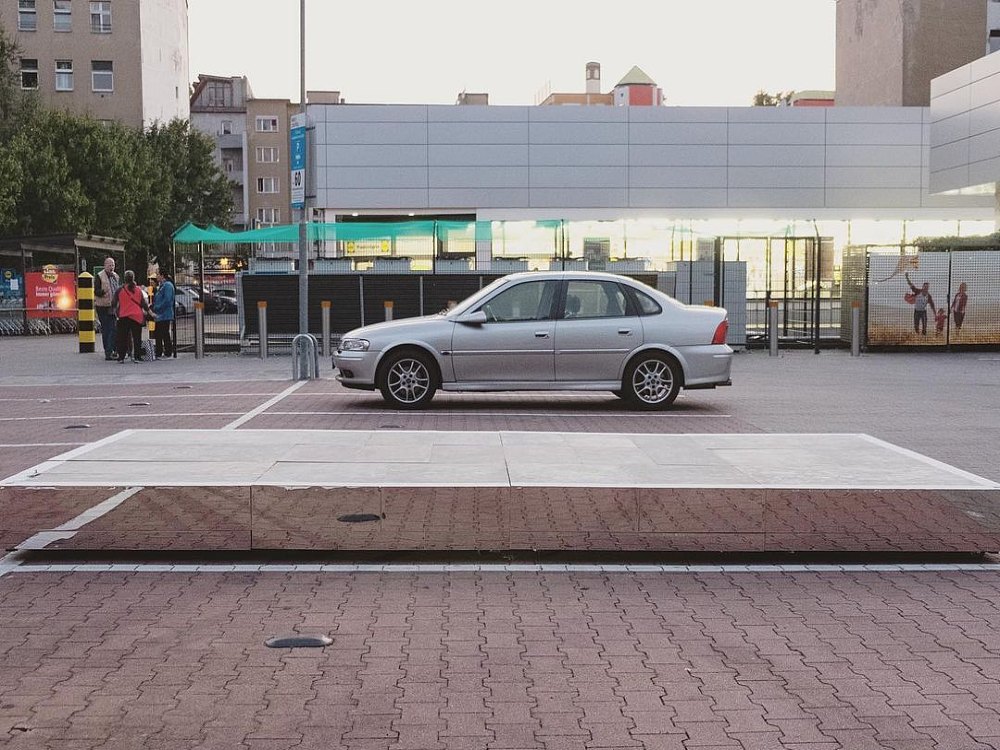
Parasite Parking is an uninvited guest on the spaces that should be available to all of us, and yet are currently occupied only by the steel bodies of modernity. But it does what is needed to make its camouflage more efficient and expand the niche as much as possible.
Although Parasite Parking was part of the exhibition RAISIN at 6018|North, a partner of the Chicago Architecture Biennial, didn’t have a city permit to occupy parking space. In fact, this urban intervention was in a way a parasite of the cultural capital of the city because, admits Wirth, 6018|North wasn’t sure about how far Parasite Parking will go to appropriate private space.
Therefore, Parasite Parking also pays parking fees, if needed, to disarm any argument for eviction. The parasite does not use the form of protest, even if it may have the same outcome of a protest.
Every morning as we woke up at the Parasite Parking, the first reaction from the locals was awaiting us. We had compelling conversations with people but also moments of confrontation, explains Wirth.
Before coming to Chicago, Wirth and Sacharow were not aware of how heavily the enforcement of public space could be reclaimed by US police authorities. It was interesting to observe, though, that the professionalism of Parasite Parking and the setting made a city’s permit a matter of course.
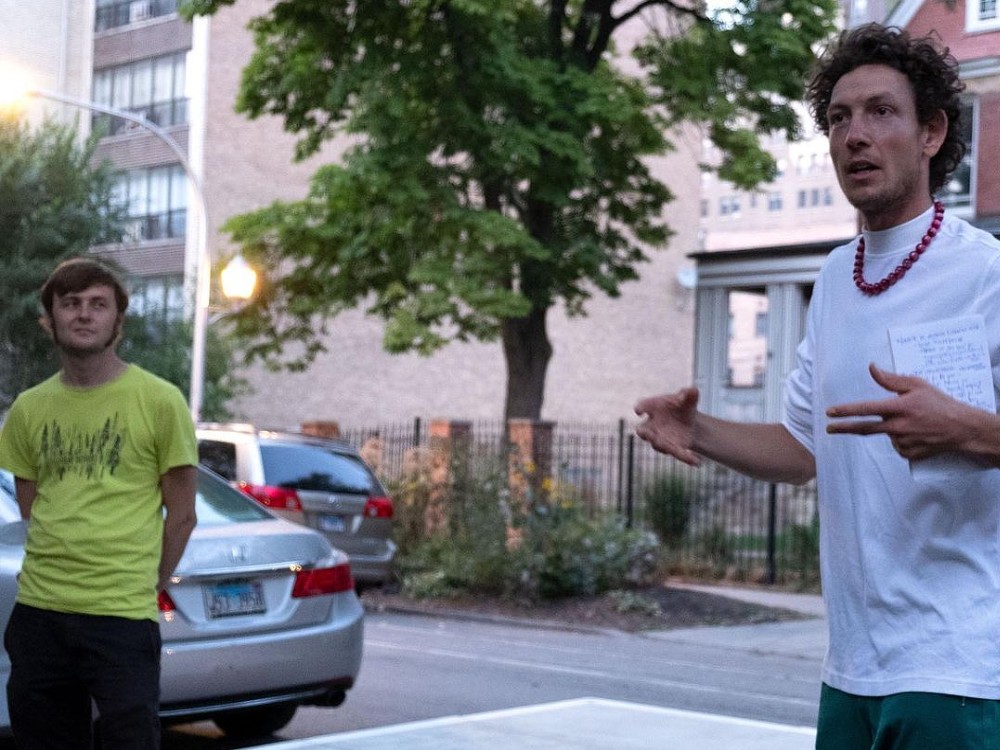
City authorities rarely asked for it. With a number plate and paid parking meter, the police rather argued that Parasite Parking was not a vehicle, to which Wirth and Sacharow were referring to the statutes of parking regulation – where a vehicle is not defined – and try to find loopholes that support their arguments.
The intention of the parasite was not to ask about ownership and its rules, but about the limits of making public space usable and about who holds and who can take public agency.
Occupying private space and loss of agency
Chicago is an extreme example of this issue. Due to a contract that leases parking space to various international private investors until 2084, the city has lost most of its control of and the ability to transform the vast parking area in the city. The city cannot adapt easily to new needs of transportation, social life or ecology. With this loan, a public good has been sold which is elemental to public space.
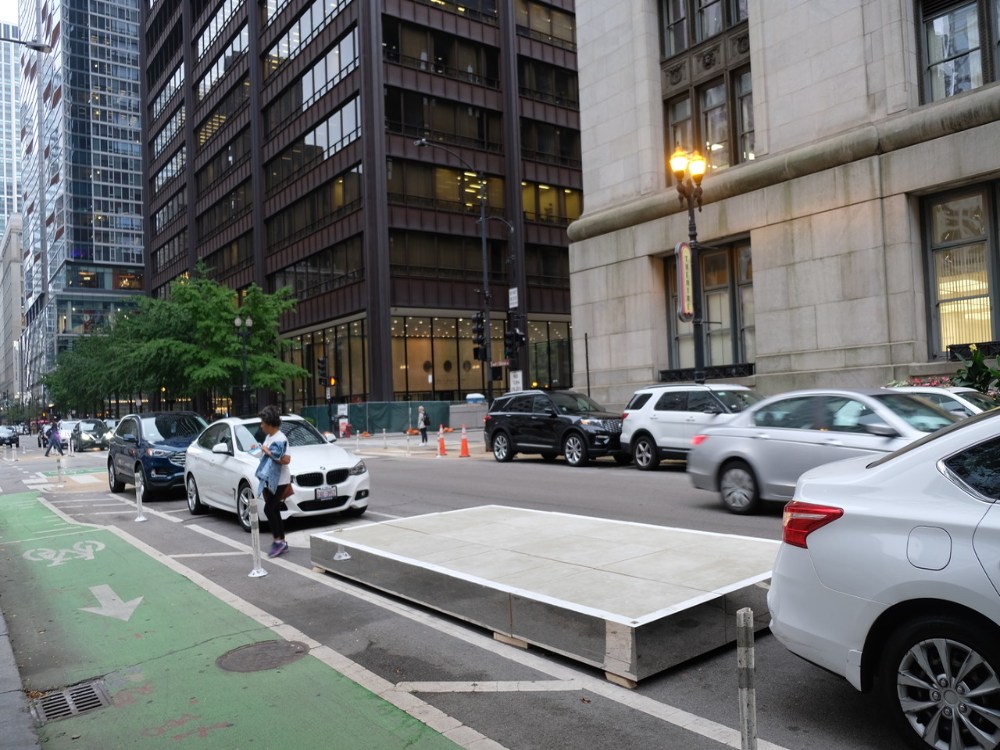
In the words of urban analyst Aaron Renn: “In effect, these deals aren’t just about parking spots, they are assigning a property right interest in the biggest component of public space in the city to a private monopoly that doesn’t have the public’s best interests at heart.”
The parasite is not only a symbol of resistance against privatization of parking spaces. It also brings up the question of who decides over the use of public space. In the case of parking spaces in Chicago, this privatization of the commons (collective commodities) has led to a loss of agency in the city, explains Wirth.
With the lease agreement, the private company ParkChicago became a major stakeholder for questions on changes and adaptations that we, as residents and constituents, can generate within our street space. For instance, if people from Chicago want new bus lines or bike lanes, this has to be negotiated with the company, as it would lose parking property; if residents wish to reduce car use and parking, or replace it with other uses such as trees or new spaces to hang out outdoors in the extended period of the pandemic, that, too, must go through the company.
Holding one interest over a myriad of needs and proposals that could emerge for the 21st century street, ParkChicago has become an oversized stakeholder in urban planning and urban life, only interested in how to generate cash from under-performing assets, and not with an operator mindset.
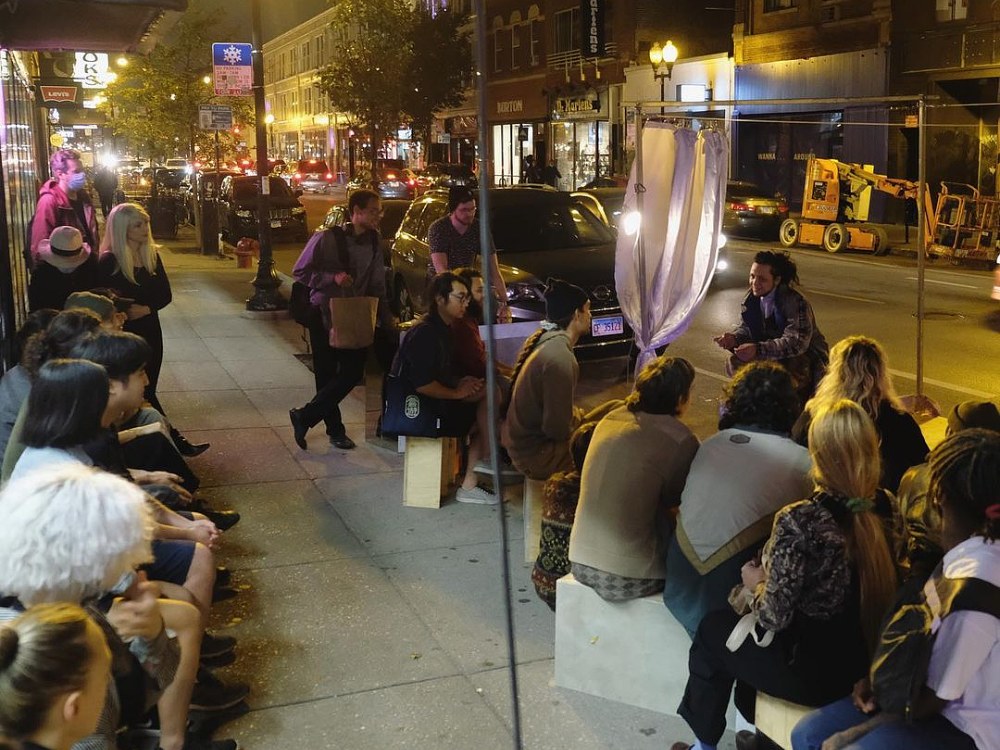
During last week, Wirth and Sacharow organized a line-up of discussions with four spatial practitioners—artists, researchers, community leaders, architects— to speak about the different strategies, aesthetics, and activities they employ to subvert the conventional rules of property.
The affordable housing aspect – The Right to the City
The parasite is also concerned with the question of living space distribution in the city: who lives in the center and who in the periphery? Where can one live at all and how does this differentiation determine class and social segregation? For tenant movements like Autonomous Tenants Union in Chicago, the parasite figure is often used to represent the Real Estate interests that extract and exploit, seize control of spaces, and force tenants from place to place. The intervention Parasite Parking introduced a different parasite figure to Chicago’s built environment which dwells and plays in one of the last remaining affordable niches of the city.
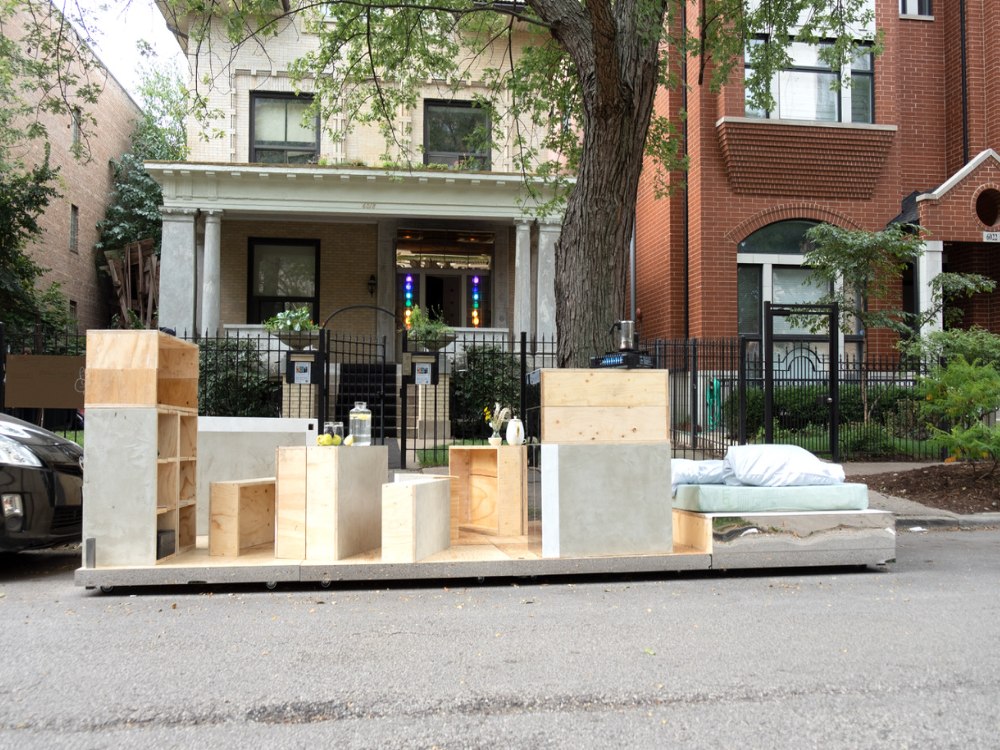
It is still cheaper to pay the fees for a parking spot every day than to rent an apartment in certain areas of Chicago. This ultimately represents a subsidy of cars over housing and raises the question whether a society should prioritize the needs of cars over the needs of humans?
It is essential to say that we do not see parasite parking or parking spaces in general as an alternative for people without a permanent home, clarifies Wirth.
Instead, parasite parking works as a catalyst and eloquent example to think about broader privatization of public spaces, profiteering and unequal access to space in the city. Because it is evident that this form of housing is precarious and uncertain; it occupies space that is in its current form inadequate for good living – and is thus nothing to be thought about in terms of large scale housing. Already Wirth and Sacharow have advocated to shift the narrative about affordable housing in cities with their art action Penthaus à la Parasit in Berlin and Munich.

‘With our intervention, we focus on the question of the variety of public space and its privatization and want to open up a variety of uses for these spaces beside parking; we do not have the intention to give an example of public policy, or to show how to do it right,’ adds Wirth.
Parasite Parking was genetically precarious. The niche it occupies is never lasting, and can disappear at any moment. At the same time, Parasite Parking enjoys the most central locations and finds a certain form of “freedom”. However, living with a sense of constant threat, the parasite always knows that, when the host discovers the niche, the parasite will be expelled.
